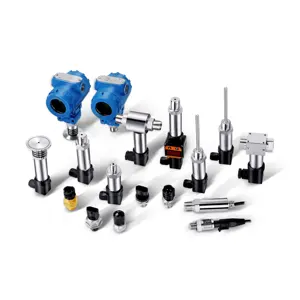Understanding Displacement Sensors
Displacement sensors are essential components in the realm of industrial automation and control systems. These devices are designed to measure the distance between an object and a reference point, translating physical movement into an electrical signal. The category encompasses a variety of technologies, each suited for specific applications, ensuring precise monitoring and control in various environments.
Types and Technologies
The diversity of displacement sensors includes Linear Variable Differential Transformers (LVDTs), potentiometric sensors, and capacitive displacement sensors, among others. LVDTs offer robust performance in harsh conditions, while potentiometric sensors are valued for their simplicity and cost-effectiveness. Capacitive types excel in non-contact measurement with high precision. Each type employs a different method to track movement, from inductive coupling in LVDTs to the resistive properties of potentiometers.
Applications Across Industries
The application of displacement sensors spans across various sectors. In automotive systems, they contribute to safety and efficiency by monitoring vehicular dynamics. Manufacturing relies on these sensors for quality control and machinery alignment. In consumer electronics, they enhance the interactivity and functionality of devices by detecting user inputs and environmental changes.
Features and Material Composition
Displacement sensors are constructed from materials that ensure durability and accurate performance. Metals, polymers, and composite materials are commonly used, each selected for its properties that match the sensor's intended use. Features such as temperature stability, resistance to environmental factors, and longevity are considered in the design of these sensors, making them suitable for a wide range of industrial applications.
Advantages of Utilizing Displacement Sensors
Incorporating displacement sensors into systems offers numerous advantages, including improved accuracy in measurement, enhanced control over processes, and the ability to automate complex tasks. Their adaptability to different environments and conditions also makes them invaluable in settings that demand high reliability and precision.
Selecting the Right Displacement Sensor
Choosing the appropriate displacement sensor requires an understanding of the specific needs of a project or system. Factors such as measurement range, resolution, and environmental conditions play a crucial role in the selection process. Alibaba.com's platform facilitates this selection by offering a comprehensive catalog of sensors to meet diverse requirements, without endorsing any particular brand or making absolute claims about product quality.










































 浙公网安备 33010002000092号
浙公网安备 33010002000092号 浙B2-20120091-4
浙B2-20120091-4